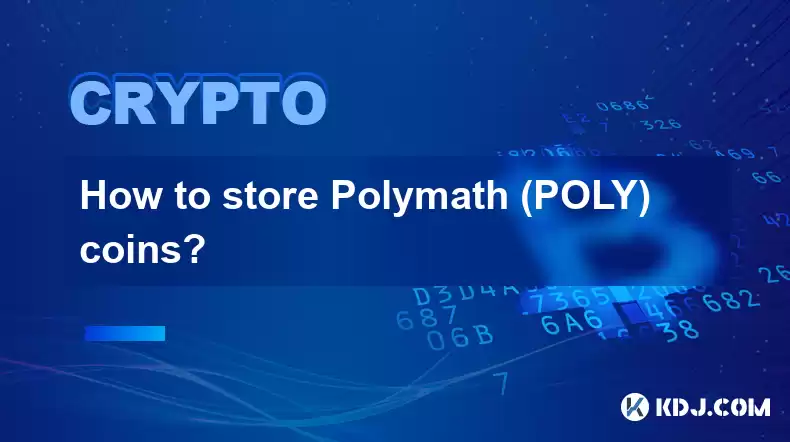-
 Bitcoin
Bitcoin $119000
0.17% -
 Ethereum
Ethereum $3664
-2.12% -
 XRP
XRP $3.229
-7.77% -
 Tether USDt
Tether USDt $1.001
0.02% -
 BNB
BNB $783.2
-1.48% -
 Solana
Solana $191.3
-5.26% -
 USDC
USDC $1.000
0.03% -
 Dogecoin
Dogecoin $0.2450
-7.74% -
 TRON
TRON $0.3115
-1.61% -
 Cardano
Cardano $0.8229
-6.80% -
 Hyperliquid
Hyperliquid $44.17
-2.93% -
 Stellar
Stellar $0.4343
-7.23% -
 Sui
Sui $3.792
-4.09% -
 Chainlink
Chainlink $18.38
-5.73% -
 Hedera
Hedera $0.2491
-7.79% -
 Bitcoin Cash
Bitcoin Cash $518.1
-1.51% -
 Avalanche
Avalanche $24.13
-5.84% -
 Litecoin
Litecoin $113.9
-5.41% -
 UNUS SED LEO
UNUS SED LEO $8.974
-0.21% -
 Shiba Inu
Shiba Inu $0.00001400
-7.98% -
 Toncoin
Toncoin $3.215
-2.09% -
 Ethena USDe
Ethena USDe $1.001
0.03% -
 Polkadot
Polkadot $4.178
-6.84% -
 Uniswap
Uniswap $10.38
-3.05% -
 Monero
Monero $317.8
-1.85% -
 Bitget Token
Bitget Token $4.733
-1.94% -
 Pepe
Pepe $0.00001293
-8.20% -
 Dai
Dai $1.000
0.02% -
 Aave
Aave $292.8
-4.74% -
 Bittensor
Bittensor $430.1
-3.67%
How to store Polymath (POLY) coins?
When choosing a Polymath (POLY) wallet, prioritize security features like multi-factor authentication, encryption, and offline storage to safeguard your tokens.
Dec 28, 2024 at 02:53 am

Key Points
- Understand the different types of Polymath (POLY) wallets available.
- Consider the security features and accessibility of each wallet type.
- Choose a wallet that aligns with your specific storage needs.
- Store your private keys securely to maintain control of your POLY tokens.
- Monitor your wallet regularly to ensure the safety of your assets.
Step 1: Understanding Polymath (POLY) Wallets
Polymath (POLY) wallets are digital tools that allow you to store, send, and receive POLY tokens. There are two main types of wallets: hardware wallets and software wallets.
- Hardware wallets: These are physical devices that store your private keys offline, providing enhanced security. They are considered the safest option for storing large amounts of cryptocurrency. Popular hardware wallets include Ledger and Trezor.
- Software wallets: These are virtual wallets that run on your computer, smartphone, or web browser. They are more convenient and accessible than hardware wallets but may be less secure. Some popular software wallets for POLY include MetaMask, Trust Wallet, and Coinbase Wallet.
Step 2: Choosing a Polymath (POLY) Wallet
When selecting a POLY wallet, consider the following factors:
- Security: Look for wallets with strong security features, such as multi-factor authentication, encryption, and offline storage.
- Accessibility: Choose a wallet that is compatible with your devices and operating system.
- Features: Consider wallets that offer additional features, such as staking, trading, and portfolio management.
- Reputation: Do research on the reputation and track record of the wallet provider.
Step 3: Storing Your Private Keys
Your POLY private keys are the most critical aspect of your wallet. If you lose them, you may lose access to your funds. Therefore, it is crucial to store your private keys safely and securely.
- Write them down: Write down your private keys on a physical piece of paper and store it in a secure location.
- Use a password manager: Store your private keys in a reputable password manager that employs strong encryption.
- Split your private keys: Divide your private keys into smaller parts and store them in different locations.
Step 4: Monitoring Your Polymath (POLY) Wallet
Regularly monitor your POLY wallet to ensure the安全y of your assets.
- Check for updates: Keep your wallet software up to date to patch any security vulnerabilities.
- Review transactions: Examine your wallet history for any unauthorized transactions.
- Enable alerts: Set up notifications to stay informed about suspicious activity in your wallet.
FAQs
Q: What is the best Polymath (POLY) wallet?
A: The choice of the best wallet depends on your individual needs. Ledger hardware wallets are highly secure, while MetaMask software wallets are convenient and easy to use.
Q: How do I back up my Polymath (POLY) wallet?
A: Generate a recovery phrase or backup file and store it securely offline. This allows you to recover your wallet in case of loss or damage.
Q: How do I withdraw my POLY tokens from my wallet?
A: Navigate to the "Send" or "Withdraw" section of your wallet, enter the recipient's address, and specify the amount you wish to withdraw. Then, follow the on-screen instructions to confirm the transaction.
Disclaimer:info@kdj.com
The information provided is not trading advice. kdj.com does not assume any responsibility for any investments made based on the information provided in this article. Cryptocurrencies are highly volatile and it is highly recommended that you invest with caution after thorough research!
If you believe that the content used on this website infringes your copyright, please contact us immediately (info@kdj.com) and we will delete it promptly.
- Rare Coins Alert: Could That £1 Coin Be Worth Over £500?
- 2025-07-24 14:30:12
- DOGE's Zero-Knowledge Leap: A Comeback Catalyst?
- 2025-07-24 14:30:12
- XRP, Solana, and Institutional Adoption: A New Era for Crypto?
- 2025-07-24 11:10:12
- Dogecoin, Remittix, and Crypto Protocols: The Evolution of Digital Finance
- 2025-07-24 10:50:12
- BlockDAG, Hedera, and Stellar: Charting the Course for Crypto's Future
- 2025-07-24 10:50:12
- BlockDAG's No-Vesting Edge: Can It Outpace Cardano's Price?
- 2025-07-24 11:10:12
Related knowledge

What is Chainlink (LINK)?
Jul 22,2025 at 02:14am
Understanding Chainlink (LINK): The Decentralized Oracle NetworkChainlink is a decentralized oracle network designed to bridge the gap between blockch...

What is Avalanche (AVAX)?
Jul 22,2025 at 08:35am
What is Avalanche (AVAX)?Avalanche (AVAX) is a decentralized, open-source blockchain platform designed to support high-performance decentralized appli...

What is Polkadot (DOT)?
Jul 19,2025 at 06:35pm
Understanding the Basics of Polkadot (DOT)Polkadot (DOT) is a multi-chain network protocol designed to enable different blockchains to transfer messag...

What is Litecoin (LTC)?
Jul 23,2025 at 11:35am
Overview of Litecoin (LTC)Litecoin (LTC) is a peer-to-peer cryptocurrency that was created in 2011 by Charlie Lee, a former Google engineer. It is oft...

What is Monero (XMR)?
Jul 21,2025 at 10:07am
What is Monero (XMR)?Monero (XMR) is a decentralized cryptocurrency designed to provide enhanced privacy and anonymity for its users. Unlike Bitcoin a...

How to add indicators to Ethereum chart on TradingView?
Jul 19,2025 at 07:15am
What Is an Ethereum Chart on TradingView?The Ethereum chart on TradingView is a visual representation of the price movement of Ethereum (ETH) over a s...

What is Chainlink (LINK)?
Jul 22,2025 at 02:14am
Understanding Chainlink (LINK): The Decentralized Oracle NetworkChainlink is a decentralized oracle network designed to bridge the gap between blockch...

What is Avalanche (AVAX)?
Jul 22,2025 at 08:35am
What is Avalanche (AVAX)?Avalanche (AVAX) is a decentralized, open-source blockchain platform designed to support high-performance decentralized appli...

What is Polkadot (DOT)?
Jul 19,2025 at 06:35pm
Understanding the Basics of Polkadot (DOT)Polkadot (DOT) is a multi-chain network protocol designed to enable different blockchains to transfer messag...

What is Litecoin (LTC)?
Jul 23,2025 at 11:35am
Overview of Litecoin (LTC)Litecoin (LTC) is a peer-to-peer cryptocurrency that was created in 2011 by Charlie Lee, a former Google engineer. It is oft...

What is Monero (XMR)?
Jul 21,2025 at 10:07am
What is Monero (XMR)?Monero (XMR) is a decentralized cryptocurrency designed to provide enhanced privacy and anonymity for its users. Unlike Bitcoin a...

How to add indicators to Ethereum chart on TradingView?
Jul 19,2025 at 07:15am
What Is an Ethereum Chart on TradingView?The Ethereum chart on TradingView is a visual representation of the price movement of Ethereum (ETH) over a s...
See all articles

























































































